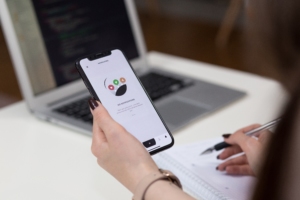This blog is part of the series Usability in the Real World: Ethics in Usability Research
Abstract: While there are many cases for a ‘unified code’, the information science and technology industry hardly has centralized ethics codes. There are two, significant explanations that intend to offer the possibilities for the absence of the so-called ‘unified code’. For one, it is widely accepted that the internet itself is not regarded by the community as a moral agent. On the other hand, information professionals already follow many principles that are sometimes perceived to include outlines of moral behavior. Still, these hardened views on ethical responsibility—the culmination of what is merely an outlook—is not enough to negate technology’s impact on ethical systems. Despite seemingly flailing jurisdiction, due to the perpetual, rapid advancement and distribution of technology, there are still real legal and ethical implications (Koehler and Pemberton, 2000). If the internet itself is not indicative or a representative of moral principles, then why should we, as information professionals, be concerned with identifying and sharing codes of ethics (Kelsen, 1990)? This is true for all categories and facets throughout the information science and technology industries. More specifically, what does a code of ethics mean for user data and its analysis by researchers? This small collection of contemporary cases are indicative of the current ethical challenges confronted by internet and social media users and researchers.
Introduction
Foremost, research that is usually conducted by UX researchers is deemed as proprietary information, and does not fall under the legal definition provided by the US Department of Health and Services. Why not? Results don’t really contribute to the industry of UX as a body of work. More so, the data collected is hardly tied to personal identification, which guarantees a sense of anonymity to human subjects (Bowman, 2014). Sounds chill, right? Think again!
The Current State of Ethical Responsibility in Usability Research
If you need proof of the current wavering state of ethics as it pertains to moral responsibility in usability research of social media channels, then look no further than to the widely cited account referenced as the “emotional contagion”. The study, published in June 2014, indicates that “researchers from Facebook and Cornell University manipulated the news feed of nearly 700,000 Facebook users for a week in 2012 to gauge whether emotions spread on social media” (Albergotti and Dwoskin, 2014). One critique points to the structure of the study breaking ethical guidelines for informed consent, which is required when involving human subjects. Facebook may have hid behind their Terms & Conditions, but, plainly put, users were never informed or even signed consent forms (Author, 2014). Facebook and Cornell both agreed that no direct access to users’ profiles existed, so no harm could potentially be done to users—this is an ethical perspective that many behavioral studies scientists subscribe to. However, anonymity doesn’t guarantee that users will be relieved of any negative effects. In fact, the test was reported to cause emotional distress in some users.
To offer a counter experience, Microsoft performed a similar test on Twitter users. Specifically, through aggregating certain words tweeted by uninformed users, Microsoft deemed some tweets as exhibiting patterns of depression. Although no one consented to their tweets being analyzed by Microsoft, the risk of contacting those in need to offer medical support outweighed the negative consequences. In this case, Microsoft assessed the risks, and decided that it was their moral responsibility to surpass consent and target particular people.
Ethical Perspectives & How To Be More Responsible
The aforementioned cases provide us with clues on how to approach testing in a responsible and ethically sound manner. In Accepting the Challenges of Social Media Research, Weller collected the voices of many social media users, but there was hardly a general consensus on how users feel researchers are justified in collecting data (2015). While most users agree that Terms of Service agreements are not the appropriate manner for companies to gain consent to collect user data. So what should be a researcher’s approach?
First, “each Internet research project requires an individual assessment of its ethical issues and selection of the most appropriate methodological approach” (Golder, Ahmed, Norman, and Booth (2017). Always inform participants that you require their consent, before they can participate in your study. You must keep all your participants’ identities separate from data and analysis. Never expose your users to any type of harm or negative effects—if there exists potential for harm, then the societal benefits of the test must outweigh the risks (Bowman, 2014).
Need more context of this critical juncture? Here’s a listicle from Forbes on how Facebook has failed many of us, through their unfair, immoral behavior as user researchers: 10 Other Facebook Experiments On Users, Rated On A Highly-Scientific WTF Scale.
References
Albergotti, R., & Dwoskin, E. (2014). Facebook study sparks soul-searching and ethical questions. Wall Street Journal, 30.
Arthur, C. (2014, June). Facebook emotion study breached ethical guidelines, researchers say. Retrieved April 01, 2018, from https://www.theguardian.com/technology/2014/jun/30/facebook-emotion-study-breached-ethical-guidelines-researchers-say
Bowman, N. (2014, August). The Ethics of UX Research | UX Booth. Retrieved April 01, 2018, from http://www.uxbooth.com/articles/ethics-ux-research/
Golder, S., Ahmed, S., Norman, G., & Booth, A. (2017). Attitudes toward the ethics of research using social media: A systematic review. Journal of medical Internet research, 19(6).
Kelsen, H. (1990). General theory of norms.
